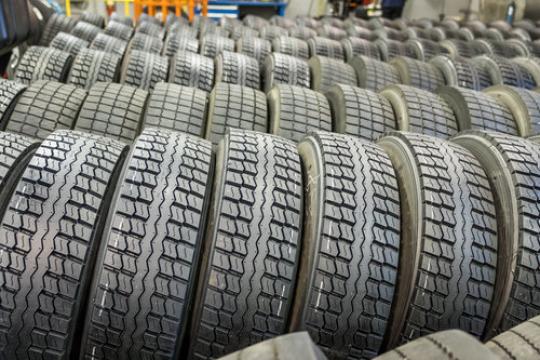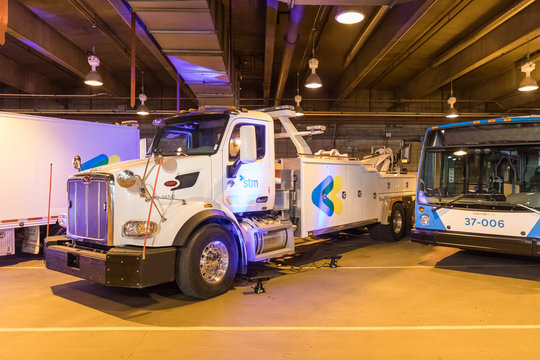Using public transit in winter
In winter and during snowstorms, we sometimes have to deal with difficult conditions. Here are our tips for using transit during winter.
For paratransit service, click here.
Stay informed
Several information tools are available to keep you up to date with the status of transit service.
Follow the GPS position of your bus via our website or via the Transit and Chrono mobile apps.
You can now consult the occupancy status and see if physical distancing is possible aboard the next bus... of if it is better to wait for the next one!
Our web page let's you select a specific bus line and learn more about operational impacts on the service such as detours, cancelled stops and general messages that apply to the transit service status during storms.
Check out the bus service status page
Follow our Twitter account to know the status of the bus service during snowstorms.
Check out our Twitter account. It's free and signing up with an account is not mandatory to access to our publications.
Call this number at any time to check your bus schedule in real-time. If a major disruption occurs on our network, a message will precede the schedule.
During snowstorms, the status of the bus transit network is updated using a banner notice in the header of our website's home page.
In total, 86 real-time customer information terminals are made available to customers on our network.
During storms, the information is published on these terminals to help make your trips easier.
5 tips for getting around in winter
1. Carefully plan your route and find out about alternatives
Our trip planning tool allows you to efficiently evaluate your options.
2. Look up the status of transit service before your trip
Check our client information tools listed below.
3. Allow for more time
Buses must also deal with snow, traffic jams, fender benders and slippery roads. Heavier ridership levels can also slow down the boarding process at bus stops and métro stations.
4. Purchase your transit fare in advance
Purchase your transit fare in advance at any of our 300 points of sale. Not sure which fare card to buy? Find out about them all here.
5. Keep your transit fare close by
Validation of transit fares has to be done quickly when boarding, the seconds saved at each stop can make a difference on your arrival time.
Real time bus schedules in winter :
Warning: During major storms and snow-removal operations in the following days, real-time schedules may be less accurate.
A tip: Follow the arrival of your bus by looking at its exact location on the map available on Transit and Chrono applications and on our website.
Winter with the STM
Nothing new here: buses are subjected to the same difficulties on the road as motorists. Fender benders, blocked streets and slippery roads can disrupt their drive as well.
See how our crews work hard so you get there easily, throughout winter!
Did you know that, to get ready for winter, our buses use winter tires that are specially adapted by our employees? On November 15, all of our buses are equipped with front tires with a minimum tread of 10/32 inch that have never been retread, along with traction-type rear tires that are stiated. Here, the latter are made from slightly worn new tires, to which our experts add grooves to increase their traction capacity and provide tires with good grip on snow.
And that is not the only expertise in that workshop! In the tire retreading shop, a new tread can be glued onto an older tire carcass still in good condition, through a process called vulcanization, or curing. The result is a virtually new tire with good grip. Not only does it save money, it's also environmentally-friendly. After inspecting the 11,500 tires on our buses, more than 1600 of them were prepared and repaired by shop workers this fall.
These service trucks are equipped with tools and supplies needed to perform repairs on the road instead of getting them back to the garage. They can handle a number of quick interventions: repairing flat tires, mirrors, windshield wipers, various fluids, bus horns, and more. As a result, transit users and drivers are not required to change buses mid-way when a minor issue can be resolved by these mechanics on wheels!
Snowstorms
We can easily imagine the work done by bus drivers and supervisors during a snowstorm, but have you ever heard of customer information advisors?
They do not remove snow from bus garages, they do not drive buses and do not answer calls from drivers either. But while the operations team is busy handling unpredicable events on the road and coordinating service at the four corners of the city, these advisors can concentrate their efforts on another important aspect of service: customer information. They are with you live throughout the winter and before, during and after snowstorms, to make your trips easier!
During major snowstorms, the towing service operates non-stop. When too many buses are stranded in the snow we must prioritize our actions and, if needed, call upon the services of a private company with whom we signed an earlier agreement.
Thanks to the devotion of our heavy vehicle mechanics and a well-organized logistics department, each truck can tow more than 40 buses in a single snowstorm day. With over 1400 buses on the road during rush hour, the work of tow trucks is essential to our operations, especially when the snow is piling up!
After the storm
Once the storm has passed, traffic can remain disrupted. Snowbanks, towing and snow removal operations slow down traffic and make road traffic difficult. We are working in collaboration with the City of Montreal to optimize the clearance of arteries and facilitate access to our bus lines.
STM needs more than its roughly 80 trains and 1700 buses to adequately provide service. To get ready for winter, our infrastructure maintenance crews have ten 10-wheel trucks, one excavating machine, six Bobcat tractors for small areas, and eight payloaders, six of them leased for the winter season.
When snow starts piling up, our maintenance employees get going, deploying men and machinery in an operational choreography! First priority is to remove any snow accumulation from our nine bus garages, so that all buses can get on the roads quickly.



